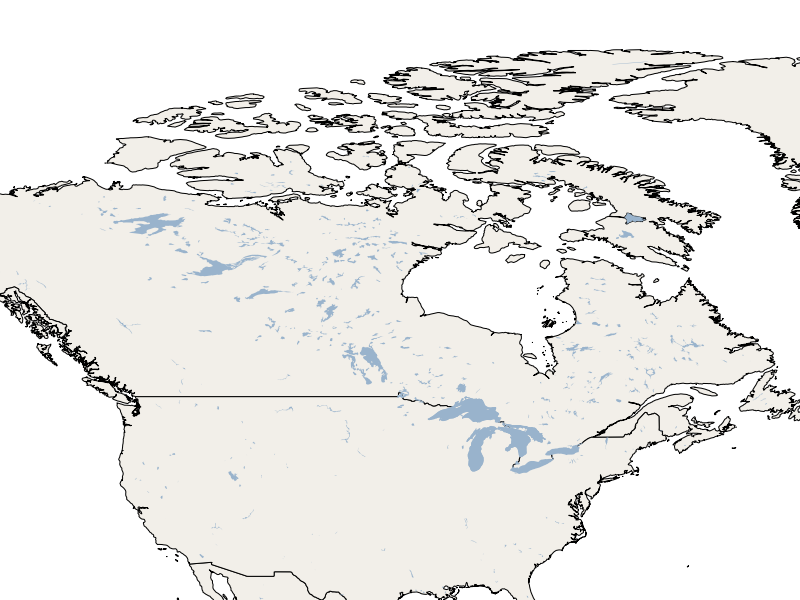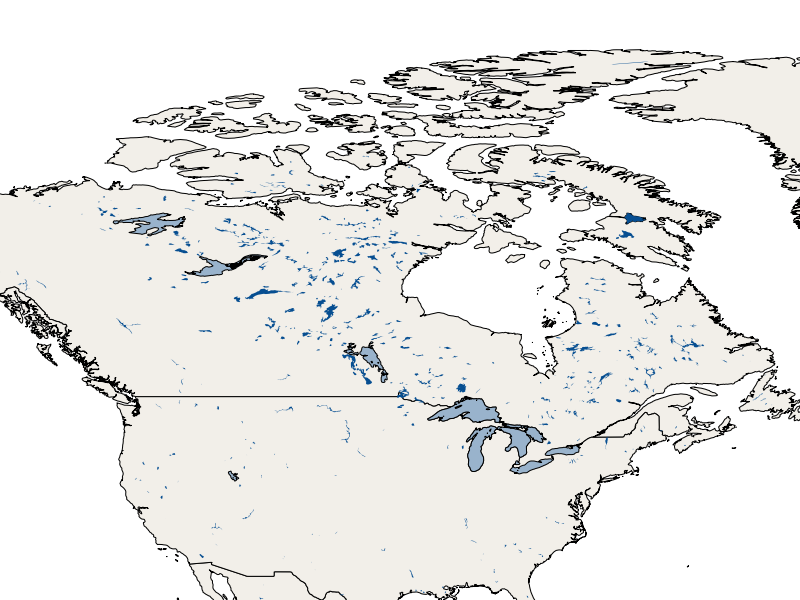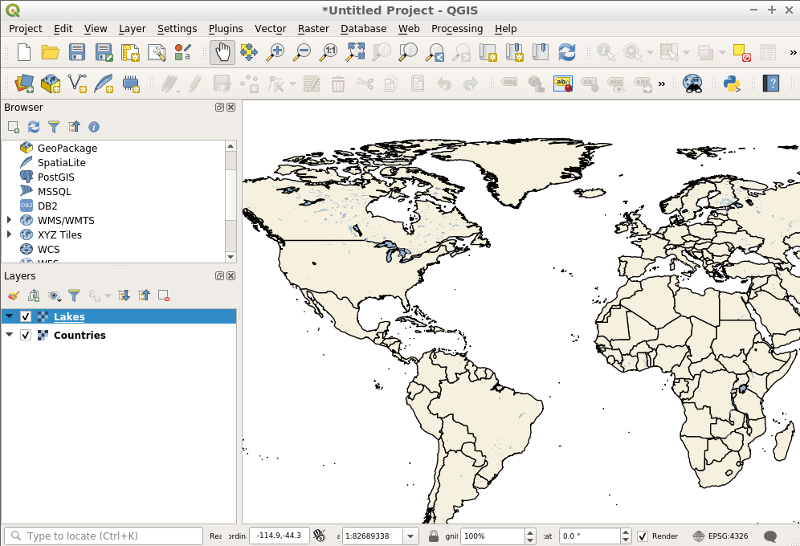MapServer Quickstart
MapServer is an Open Source server based
application that allows you to publish geographic map images and vector data
through the internet using OGC standards
such as WMS, WFS, and WCS.
This Quick Start Contents
Note
What will I learn ? You will learn how to use to render an image with
layers from a MapFile with MapServer using an OGC WMS request.
Open a web browser and enter the following URL:
http://localhost/cgi-bin/mapserv?map=/home/user/mapserver_quickstart.map&SERVICE=WMS&REQUEST=Getmap&VERSION=1.1.1&LAYERS=Countries&SRS=EPSG:4326&BBOX=-137,29,-53,88&FORMAT=PNG&WIDTH=800&HEIGHT=600
What does the above mean? If we put it in simple words, it’s a Web Map
Service (WMS) GetMap
request that tells MapServer to “use the following MapFile to render the
specified layers as a png image based on some user-supplied parameters such
as image size, geographical extent, projection, etc.”. All layers
specified in the “&LAYERS=…” property having STATUS ON in the MapFile
will be rendered in addition to all layers with STATUS DEFAULT. The
result looks like the following:
Note
All parameters of the request are WMS-specific, except
“?map=/home/user/mapserver_quickstart.map”, which is MapServer-specific.
Although MapServer is geared towards web applications, it can also produce
images on the command line. This can be useful if you are looking for
repetitive mapping, or while debugging.
Open a terminal () and type:
shp2img -m mapserver_quickstart.map -o mymap.png
If this command runs successfully, you are able to see your rendered map at
file:///home/user/mymap.png.
Note
What will I learn ? You will learn how to add a new layer object
definition to your MapFile.
We will now add a new layer to our MapFile. Before the last END statement
in the MapFile, add the following layer configuration:
LAYER
NAME "Lakes"
STATUS ON
TYPE POLYGON
DATA "ne_10m_lakes"
CLASS
STYLE
COLOR 153 179 204
END
END
END
Now we have 2 layer definitions in our MapFile. Note that the new one we
just added has the “STATUS” property set to “ON”. That means that unless we
specifically request it, it won’t be rendered.
Let’s take our previous WMS GetMap request and add our new “Lakes” layer
to the image rendered. We simply need to add the new layer name to the
“LAYERS” property list:
http://localhost/cgi-bin/mapserv?map=/home/user/mapserver_quickstart.map&SERVICE=WMS&REQUEST=Getmap&VERSION=1.1.1&LAYERS=Countries,Lakes&SRS=EPSG:4326&BBOX=-137,29,-53,88&FORMAT=PNG&WIDTH=800&HEIGHT=600
The image rendered by MapServer looks like our previous map, but with the
addition of the lakes from our new layer:
Note
What will I learn ? You will see an example of styling elements inside
a layer depending on some of its data properties.
In a MapFile, a LAYER object can contain an infinite number of CLASS
objects. These are used to style the elements contained in the spatial data
file (DATA). For example, if we look closer at our “ne_10m_lakes” data file
using a tool such as ogrinfo, we’ll
see the geometry and attribute definitions it contains. These attribute
values can be used as a way to draw the elements inside a dataset
differently using multiple CLASS objects.
In our “ne_10m_lakes” dataset, we have a ScaleRank attribute, which seems
to be related to the size of the lakes. We can use this as a way to render
the lakes differently. In the LAYER object, we’ll add another CLASS object
just before our current one:
LAYER
NAME "Lakes"
STATUS ON
TYPE POLYGON
DATA "ne_10m_lakes"
CLASSITEM "ScaleRank"
CLASS
EXPRESSION /0|1/
STYLE
COLOR 153 179 204
OUTLINECOLOR 0 0 0
END
END
CLASS
STYLE
COLOR 153 179 204
END
END
END
What does our new CLASS object do? It basically tells MapServer to draw the
elements having the “ScaleRank” property equal to “0” or “1” with a black
outline. Class objects are always read from the top to the bottom for each
feature to be drawn. When a feature matches the “EXPRESSION” specified in a
class, that class is going to render the feature. If the feature does not
match a class the next class is checked. If a feature does not match any
class then it is not rendered at all but if the last class in a layer
contains no EXPRESSION then that class acts as a default. The LAYER
“CLASSITEM” property tells MapServer which attribute to use when evaluating
EXPRESSIONs defined in the CLASS objects.
The result of this new addition should make the big lakes in our map image
rendered with a black outline:
MapServer supports different OGC Standards like OGC WMS, WFS or WCS. With OGC WMS you can publish your data as a Map Service and integrate the service in a Desktop GIS like QGIS or in a Web Client like OpenLayers or Mapbender.
This is a simple example, but you can do much, much more. The MapServer
project website contains many resources to help you get started. Here’s a
few resources to check out next:






